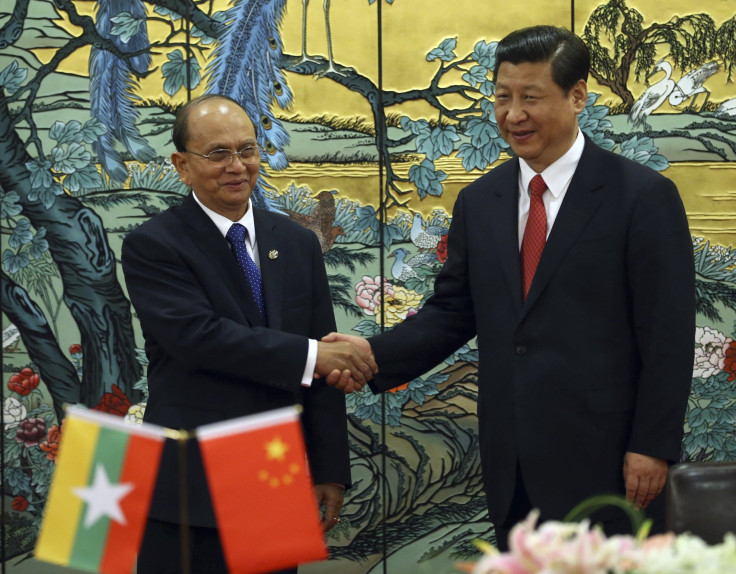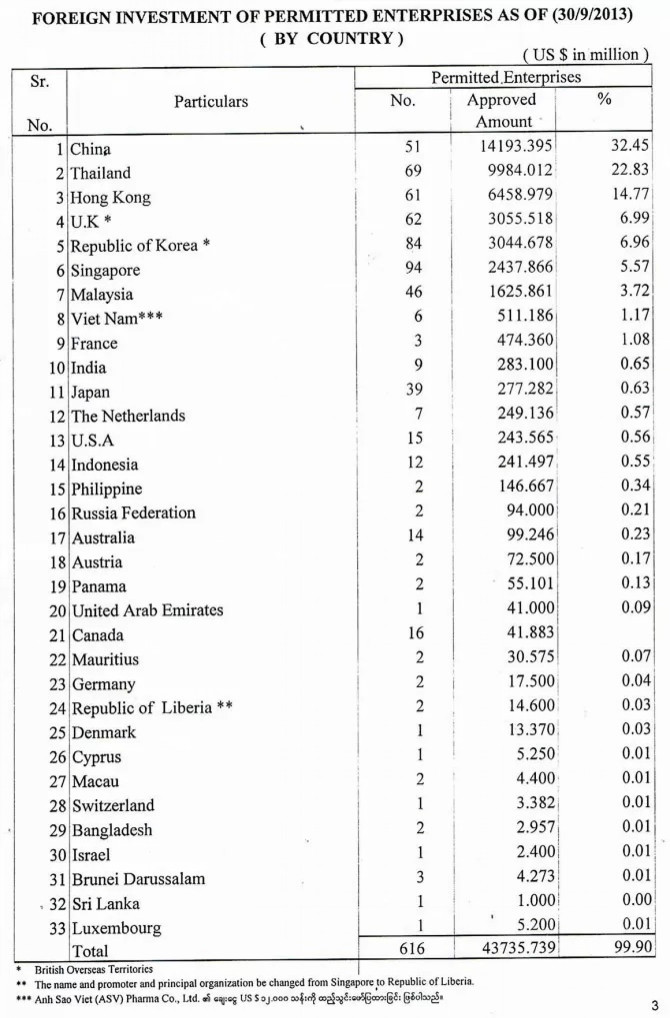Myanmar FDI: China Accounts For One Third Of Foreign Investment In Myanmar With $14 Billion

Chinese companies account for a third of the nearly $44 billion of foreign investment Myanmar has approved since 1988, highlighting China’s long history of dominance in its impoverished Southeast Asian neighbor.
The period beginning in 1988 and ending on Sept. 30 of this year saw Chinese companies invest $14.19 billion in Myanmar, accounting for 32 percent of the total $43.74 billion foreign investment the Burmese government approved in the period. China also leads in terms of actual investment with $14.12 billion, or nearly 42 percent of the total $33.67 billion, according to figures Mizzima, a Myanmar newspaper, obtained from the Myanmar Investment Commission (chart below).
The sector in which most investment has been approved is electricity, at more than $19 billion, or nearly 44 percent of the total. The sector received $13.21 billion in actual investment but despite the largesse, Myanmar is still largely disconnected with more than 70 percent of its 60 million citizens in the dark.
Oil and gas tops the list of actual investment by sector with $13.63 billion, or more than 40 percent of the total, while electricity follows and mining occupies a distant third with just $2.31 billion.
After China, Thailand is the biggest approved investor in Myanmar with $9.98 billion. Hong Kong, Britain, South Korea, Singapore, and Malaysia are all top investors as well. The United States ranks 13th in terms of investment with a total of $243 million.
However, Thailand seems to have a habit of overpromising in Myanmar – Thai actual investment only amounts to $2.88 billion, less than a third of its approved investment. Hong Kong, on the other hand, has invested $6.37 billion of the $6.46 billion it has been approved for.
Other top industries for which Myanmar has received foreign investment include manufacturing, hotels and tourism and real estate.
China has mostly invested in hydropower dams, mining projects and the oil and gas pipeline that is now in operation. Many of these projects benefitted China more than Myanmar, causing protests and attracting criticism from locals and international activists alike.
“The Chinese investment is mostly resource and energy project,” said Sean Turnell, an economics professor of Macquarie University in Sydney, according to the Chiangrai Times, a Thai newspaper. “It is mostly about taking stuff out of the ground or taking energy out of Burma and into China, with China as the main consumer.”

© Copyright IBTimes 2024. All rights reserved.




















